Trainers in Combat
The only Cougars to go into combat were the two-seat TF-9J trainers employed by the Marines for Fast Forward Air Control (Fast FAC) missions in Vietnam. Detachments of four TF-9J Cougars were assigned to Headquarters and Maintenance Squadron ONE ONE (H&MS-11) at Da Nang and to H&MS-13 at Chu Lai. These Cougars served with distinction directing airstrikes against enemy positions (primarily in South Vietnam) between 1966 and 1968 before they were replaced by Douglas TA-4F Skyhawks in the Fast FAC role.
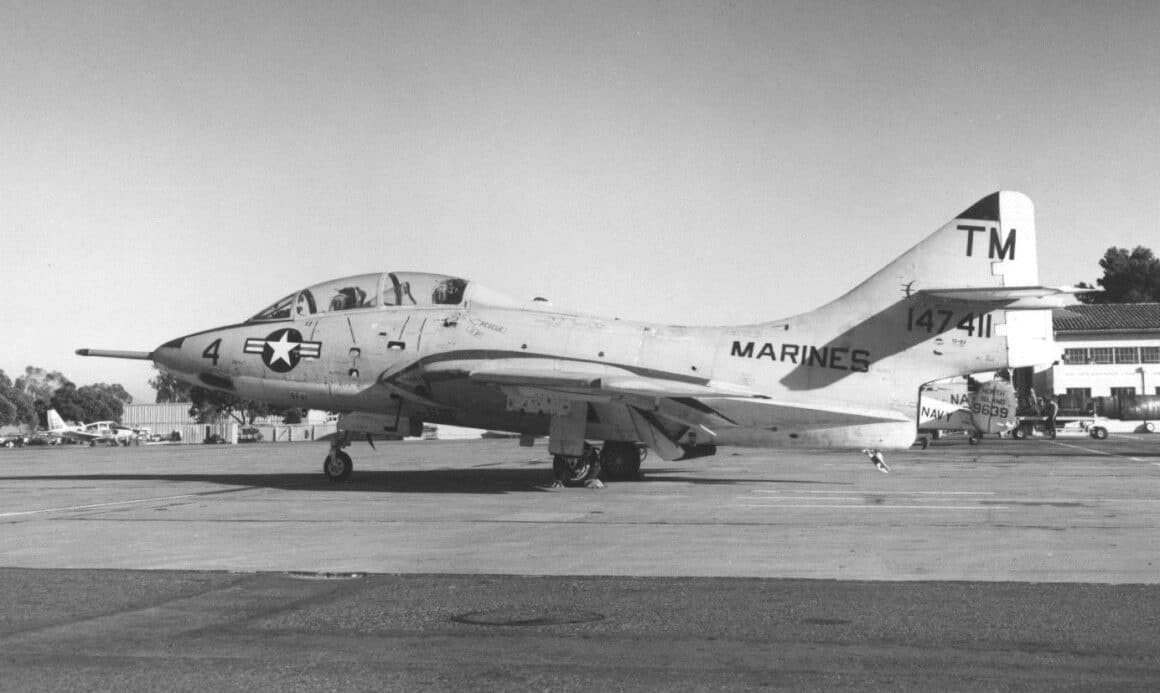
Service with the Leathernecks
F9F-6 Cougars were operated by more than twenty Marine Corps Reserve squadrons after they were replaced in Navy fleet squadron service by F9F-7s and F9F-8s. VMJ-2 Playboys flew F9F-6Ps out of Marine Corps Air Station (MCAS) Cherry Point in North Carolina. VMCJ-3 Eyes and Ears of the Corps flew F9F-8Ps out of MCAS El Toro in California. During the late 1950s F9F-8s and F9F-8Bs were operated by VMCJ-2 Playboys. F9F-8s and F9F-8Bs were operated by VMCJ-2, VMF-311 Tomcats, VMA-533 Hawks, and VMFT-10. VMIT-10 used F9F-8Ts as instrument trainers. H&MS-11, H&MS-13, H&MS-15, and H&MS-37 operated F9F-8Ts for proficiency training and other specialized roles.
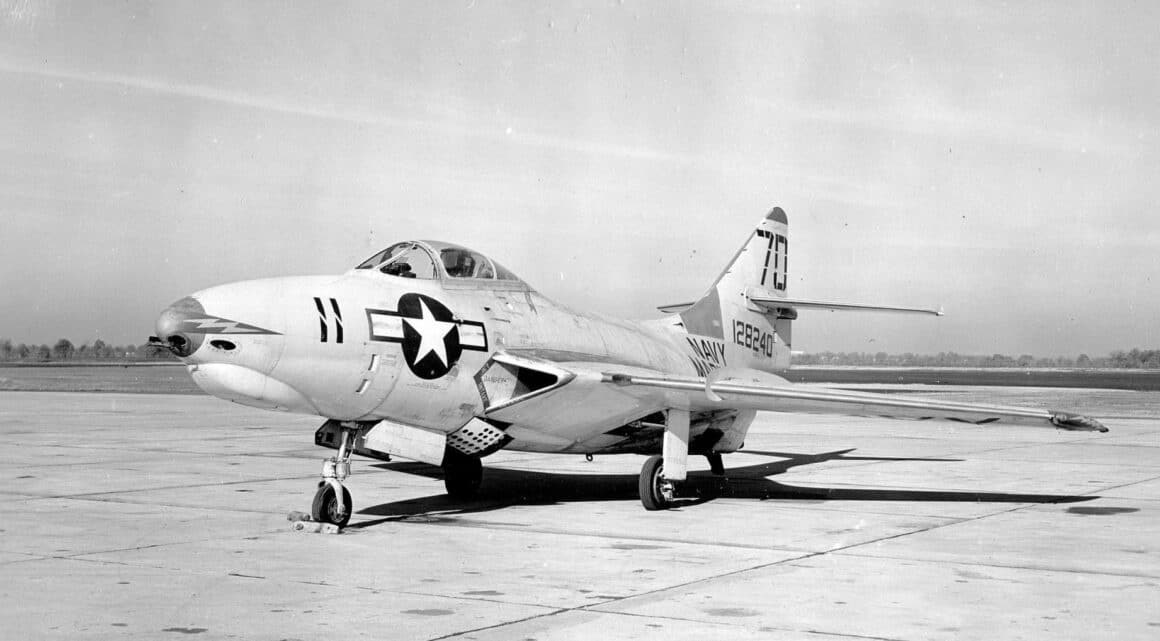
Short Service with the Blues
The US Navy flight demonstration team, the Blue Angels, switched from F9F-5 Panthers to F9F-6 Cougars for their 1953 show season. However, the Navy decided to use the Cougars for fleet squadrons instead and supplied overhauled F9F-5s to the Blues. Consequently the Blue Angels never flew a single performance in the F9F-6. But in 1954 the team did acquire F9F-8 Cougars. The Cougar epoch was short though- in 1957 they were replaced by Grumman’s next-generation cat, the F11F-1 Tiger. A single F9F-8T was retained for the press, VIP, and other missions requiring a second seat, as the Tiger only came in a single-seat flavor.
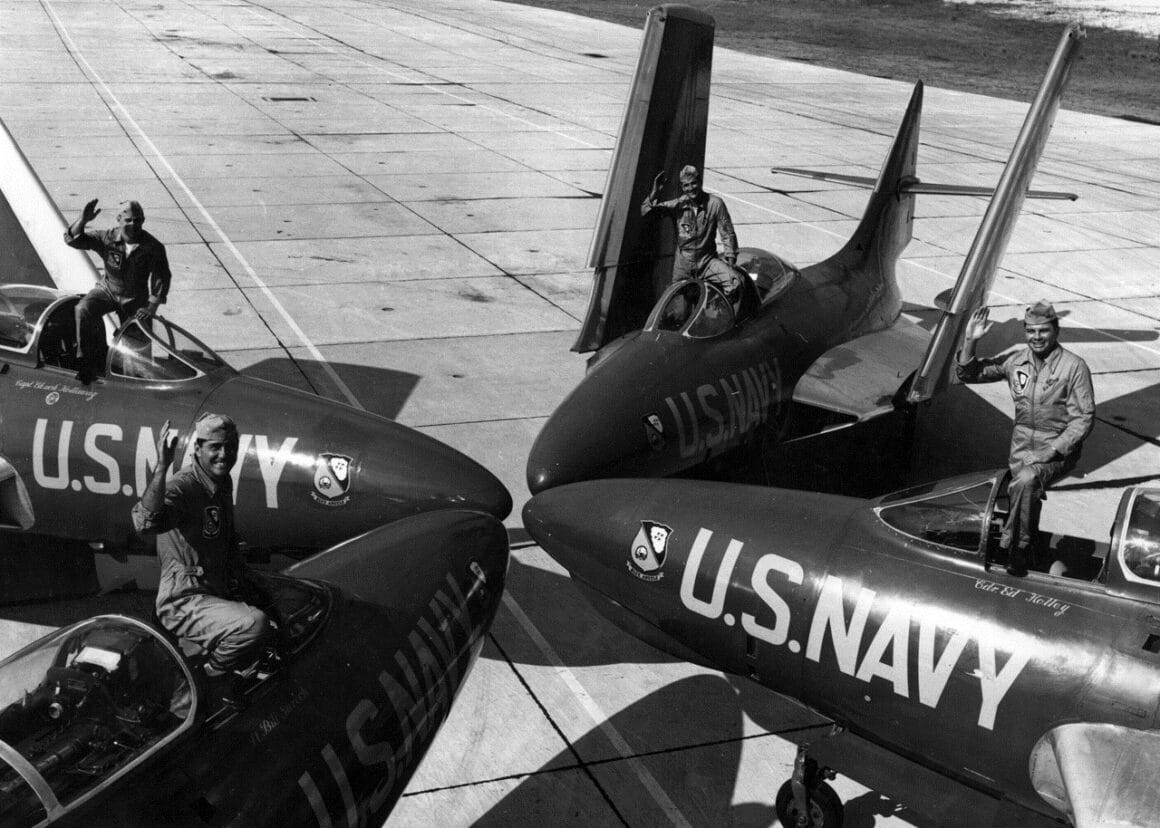
Cougar Trivia
In 1956 two F9F-7s were modified to test a British “innovation”- the flexible deck. Built by Goodyear, the flex deck was a half-inch think layer of rubberized fabric- lubricated to allow the jets to slide across it until the tailhook engaged the arresting gear. The jets were fitted with a three-inch deep ventral bulge running down the center of the fuselage to reduce damage to the airframe.
Aircraft operating from the padded flex deck did not use landing gear, which theoretically saved up to 33% of the jet’s total weight. However, consider the downsides: No bingo or diversion option to land-based runways, extremely narrow margin for error on approach and landing, and the handling of the jets, both before and especially after landing, was problematic to say the least.
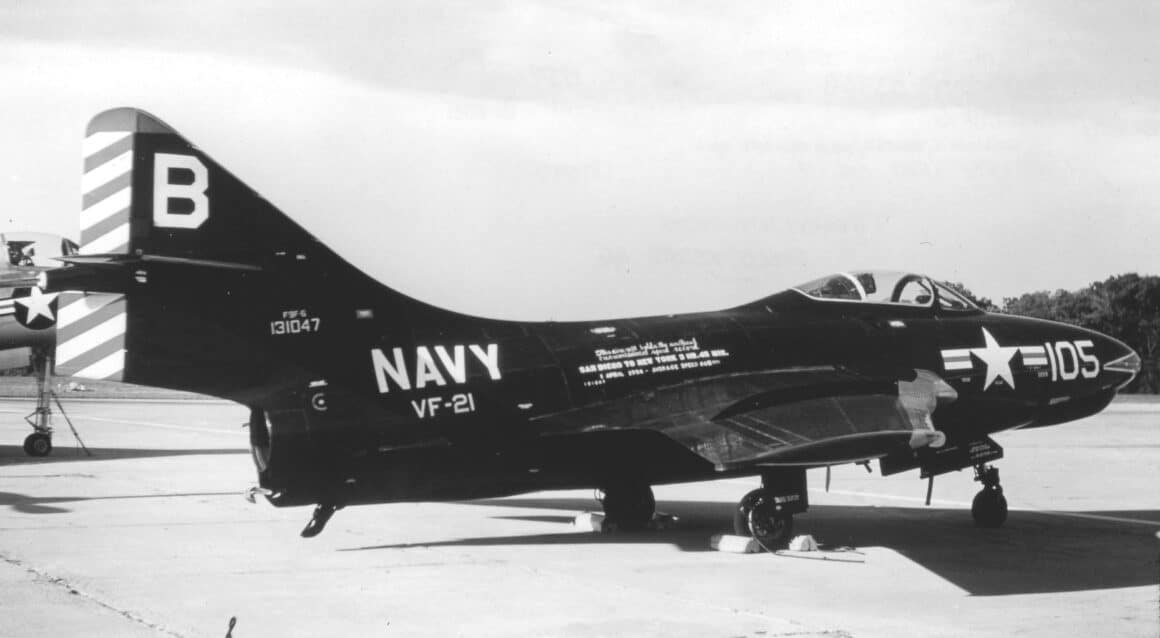
On 1 April 1954, three VF-21 Freelancers F9F-6 Cougars completed the first transcontinental flights ever completed in less than four hours. The three jets made the 2,438-mile flight from NAS North Island in California to NAS New York (Floyd Bennett Field) averaging 3 hours 43 minutes.
On 5 October 1956 three VF-144 Bitterbirds F9F-8 Cougars set an unofficial round trip speed record, flying from NAS Miramar in California to Grumman on Long Island in New York and back to Miramar. Refueling stops were made at NAS Olathe in Kansas during each leg of the round trip. The total time was 10 hours 49 minutes 11 seconds.

Logic dictated that given the differences between Panther and Cougar, the F9F-6 should have received a separate designation of its own rather than the suffixed F9F designation it was granted. F10F was already taken by the experimental swing-wing Grumman XF10F Jaguar. F11F would be the designator for the jet that replaced many Cougars in service- the Grumman F11F Tiger. At least they gave the jet a different Grumman cat nickname.
On 28 August 1957 the F9F-8T was used for the first demonstration of the Martin-Baker ground level ejection seat when RAF Flight Lieutenant Sydney Hughes ejected from the aft cockpit of an F9F-8T. F9F-8Ts were later modified for use by the Naval Parachute Facility at NAS El Centro in California, with the aft canopy section removed for ejector seat testing.
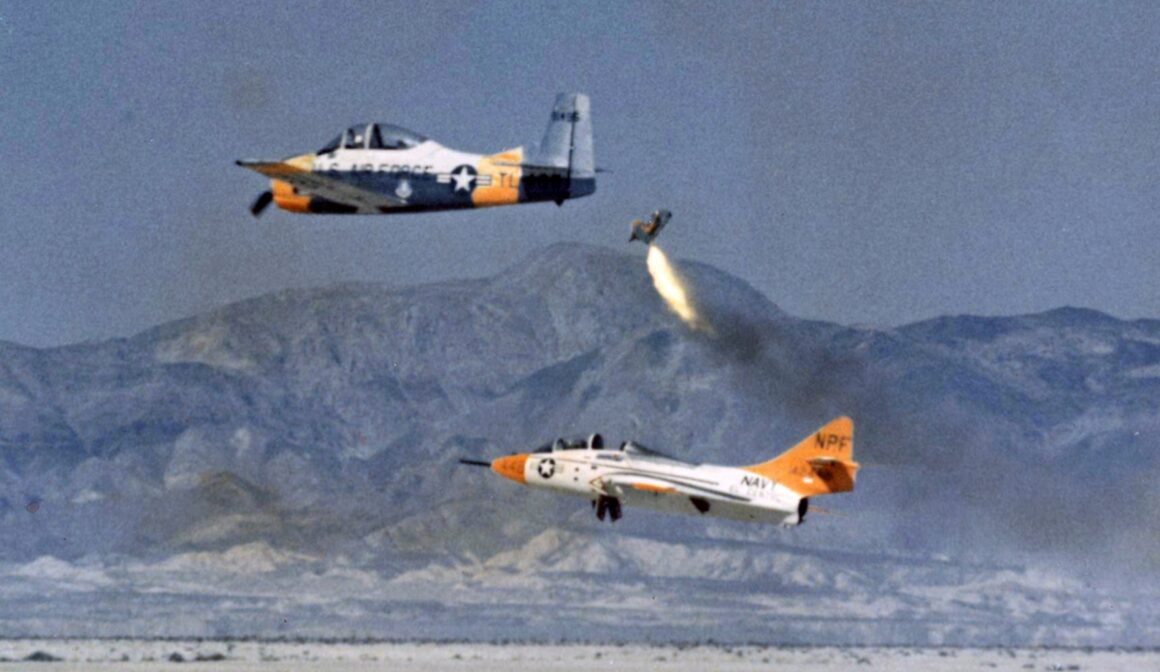
As with the F9F-5 Panther, the Cougar was operated by only one foreign country- Argentina’s Naval Aviation. Two F9F-8T trainers arrived in the South American country in 1962 and promptly became the first jet aircraft to break the Argentinian sound barrier. Both Argentinian two-seat Cougars were retired in 1971.
